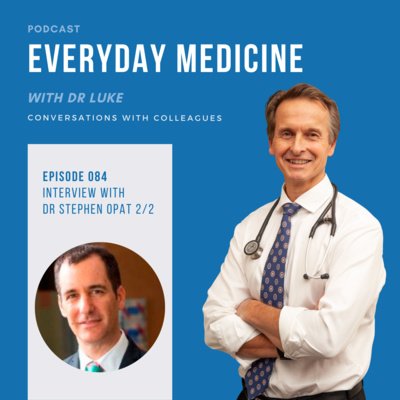Everyday Medicine by Dr Luke Crantock
Conversations with colleagues providing helpful ideas and advice in healthcare
Episode 84. Lymphoma with Professor Stephen Opat (Part 2)
Lymphoma is a clonal neoplastic proliferation of lymphoid cells (B cells, T cells and NK cells) and is the sixth most common malignancy reported in this country which makes it the most common hematologic malignancy with over 5000 cases diagnosed each year in Australia putting lifetime risk at 1 in 50.
Episode 83. Lymphoma with Professor Stephen Opat (Part 1)
Lymphoma is a clonal neoplastic proliferation of lymphoid cells (B cells, T cells and NK cells) and is the sixth most common malignancy reported in this country which makes it the most common hematologic malignancy with over 5000 cases diagnosed each year in Australia putting lifetime risk at 1 in 50.
There are over 70 different types of lymphoma which are divided into 2 main groups: Hodgkin's lymphoma accounts for 10% of cases and non-Hodgkin's lymphoma accounts for 90% of cases.
Hodgkin's lymphoma named after Thomas Hodgkin (1832) is more common in men, and tends to occur at a younger age than non-Hodgkin's lymphoma with a bimodal age distribution but the average age at diagnosis of 39 years and involves lymph nodes frequently on just one side of the body usually above the diaphragm. The tumour cell is referred to as the Reed Sternberg cell which is a bi or multi-nucleated B cell comprising characteristically just 1% of the lymphoma mass. Just to make this nomenclature interesting there is classic Hodgkins which make up about 95 % of cases and of which nodular sclerosing comprises about 70 % and mixed cellularity 20-25 % and non-classic Hodgkins is characterised by nodular lymphocytic predominant pathology.


